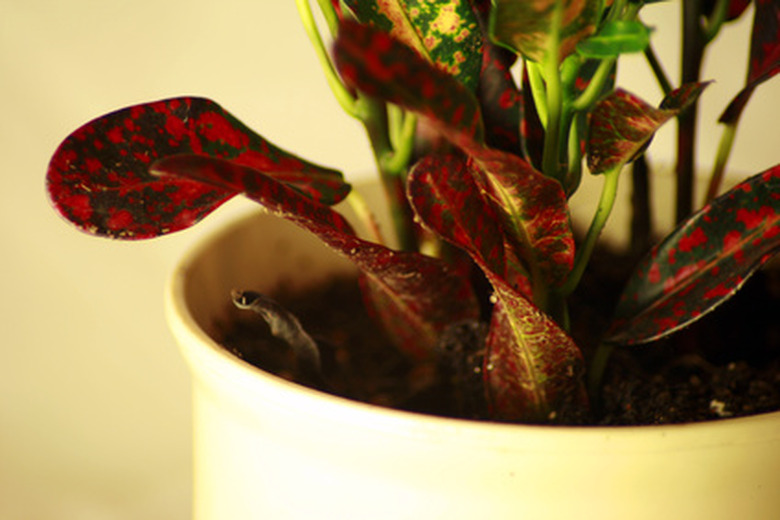Artificial Light & Indoor Plants
Plants add nature and oxygen to an indoor space. However, not all kinds of plants receive enough sunlight to be indoor plants and those plants that can be indoors usually need to be near a window. That is, unless the indoor gardener uses the right combination of lights or purchases a specialized plant sun lamp.
Location
Plants that are indoors usually need to be near a window in order to receive the sunlight they need in order to engage in photosynthesis. Sometimes, artificial light bulbs can generate enough light to allow the plant to live, but these lights do not always generate enough light. However, luckily, light fixtures don't generate so much light that they harm indoor plants. Therefore, plants can be exposed to artificial light for longer periods of time without harm, as long as the plant is not placed too close to the artificial light.
- Plants add nature and oxygen to an indoor space.
- Sometimes, artificial light bulbs can generate enough light to allow the plant to live, but these lights do not always generate enough light.
Time Frame
Plants need light in order to make the majority of their food. While sunlight is ideal, plants can engage in enough photosynthesis if they receive red and blue parts of the light spectrum for at least 16 hours a day, according to the University of Vermont. A light timer should be used to ensure that the lights are turned off and on at the right times.
Colors
Plants get most of their energy from the red and blue parts of the light spectrum. They do not get energy from the yellow and green rays. The types of light bulbs that homes mostly have are not helpful for plants, since they do not produce enough blue light and are also often too hot for plants, according to the University of Hawaii. Fluorescent tubes are usually some of the better artificial light sources and plants can be placed closer to fluorescent tubes, according to the University of Vermont.
- Plants need light in order to make the majority of their food.
- The types of light bulbs that homes mostly have are not helpful for plants, since they do not produce enough blue light and are also often too hot for plants, according to the University of Hawaii.
Types
Combining fluorescent tubes and incandescent light bulbs can give plants enough of the red and blue color that they need in order to engage in photosynthesis. According to the University of Vermont, the ideal ratio of incandescent to fluorescent light bulbs is 3 to 10. Those who want to save money can also use reflective surfaces in order to reduce the number of lights that need to be used.
Warning
Plants always need some form of light, but some plants do not need anything more than the normal lights that are in the house and the sunlight that comes in through the windows. This is especially true for plants who survive in semi-shade like Chinese evergreens, according to the University of Hawaii.
